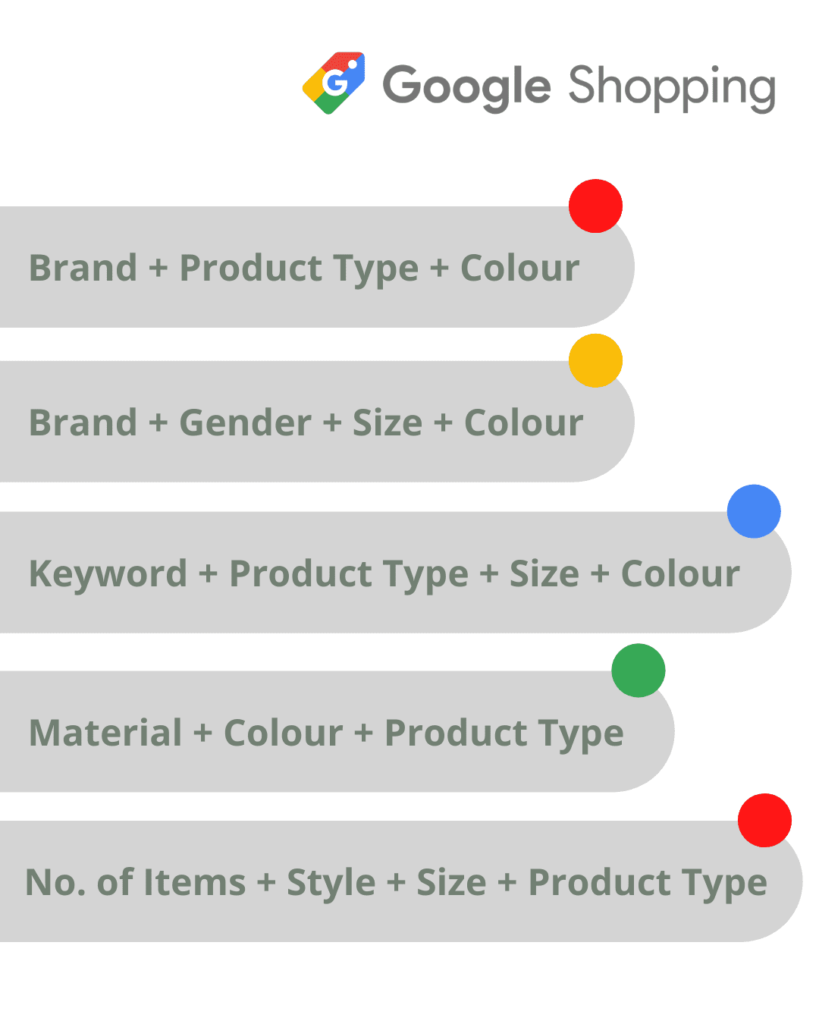Most online shoppers use Google Shopping. Why wouldn’t they when it’s so easy to access and use? But the problem for retailers is that it makes it that little bit harder to stand out from the crowd. For example, if you’re selling iPhones, you definitely won’t be the only one. So how can you get your ad noticed? One way is with optimising your Google Shopping product titles.
This doesn’t have to be the chore it sounds like. In fact, with some simple tips, you can set yourself up for success and watch your click-through rate rise.
So what are you waiting for?
5 ways to optimise your Google Shopping product titles
1. Use the right keywords
If you’re not using the right keywords in your Product Titles, your products aren’t going to get found. It’s that simple. And more importantly, the keywords you choose need to match what you’re selling. If they don’t, your click-through rate will suffer and disgruntled customers will leave your site. It’s also important to note that Google Shopping ads are ranked by relevance to the consumer.
So how do you choose the right keywords to optimise your Google Shopping Product Titles? There are a few tools you can use to find keywords and their search volumes.
Perhaps the most popular is Google’s own Keyword Planner. You can search multiple keywords at a time to get their average monthly searches and competition scores, and it will also suggest similar ones that you may not have thought of.
Ubersuggest is another free tool, but the downside is that you can only get the data for one keyword at a time.
If you already have an account with Semrush, you can use their Keyword Overview tool. As well as providing search data and competition, this also presents you with insights from the SERPs.
To take your keyword research a step further, take a look at Google Trends. This free tool will help you track any seasonal traffic for your keywords so you can see when the best time to launch your campaign would be.
If you have already been running search campaigns then this can also be a great way to find which keywords are being searched for, and you also will have the data to see what has generated the most sales.
2. Test the best structure
Once you’ve decided on the most relevant keywords and attributes to include in the product titles, it doesn’t end there. Optimising the structure can be just as important as the information included itself.
The order in which the information is displayed can vastly help improve CTRs and prevent vital attributes being cut due to character limits. Google will also weigh more towards the keywords at the beginning of the title, helping to match your products with the right searches.
Some of the most popular structures are:
- Brand + Product Type + Colour
- Brand + Gender + Size + Colour
- Keyword + Product Type + Size + Colour
- Material + Colour + Product Type
- No. of Items + Style + Size + Product Type
But don’t just take our word for it – each individual product for each individual search will perform differently with different titles.

3. Make the most of your character limits
While the product title character limit does tend to change, the ideal length is 75 to 100 characters. In fact, the top 43% of top advertisers make their titles longer than 70 characters.
The most important thing to remember here is that Google will truncate any titles that are too long. You need to put what you want your customers to see at the beginning – but that doesn’t mean not putting extra information in. Even though Google will shorten your title, it will still read it and pick out information to help with ranking for certain search queries.
If you’re looking for ways to save on characters, follow these simple tips:
- Use digits instead of spelling out numbers
- Capitalise the first letter of every word – 97% of product titles are already doing this
- Don’t be afraid of using symbols like pipes, dashes and parentheses despite Google’s recommendations against them – they can add structure to titles and make them easier to read
4. Know when to optimise for branded searches
You’ll have seen all the big companies doing it, but optimising your Google Shopping ads for brand searches isn’t necessarily a winning strategy for small businesses.
The best thing to do here is check the queries that are displaying your products. If they include your brand name, go ahead and optimise your ads in this way. If not, it’s probably a waste of time and title characters.
5. Don’t forget about product descriptions
Your Google Shopping ad optimisation shouldn’t end with your product title – remember your descriptions. But what’s the best way to do this?
To start with, you have up to 5,000 characters to work with. It sounds like a lot, but you can run out of space quite quickly. Google recommends the following to make sure you’re using your description to its full potential:
- Only describe the product you’re selling, not details about compatible products and accessories or your company’s policies
- Use correct grammar and avoid ‘gimmicky’ ways of drawing attention like all caps, symbols and promotional text
- Don’t use foreign words unless they’re well understood worldwide
- Don’t include comparisons to other products
- Avoid capital letters for emphasis – this can be misconstrued as spam or untrustworthy
- Be specific and accurate
- List the most important details in the first 500 characters – users will have to click to expand a longer description so might miss some of the information
If Google finds your product description violates their guidelines, it will disapprove your product.
Making the most of your Google Shopping ads
Alongside the image, your product title will be the first thing potential customers see when looking at your listings. You need to make it count.
Is there anything you’ve done that has increased your click-through rates on Google Shopping? If so, let us know in the comments or tweet us @TeamTillison. We love hearing from you.







